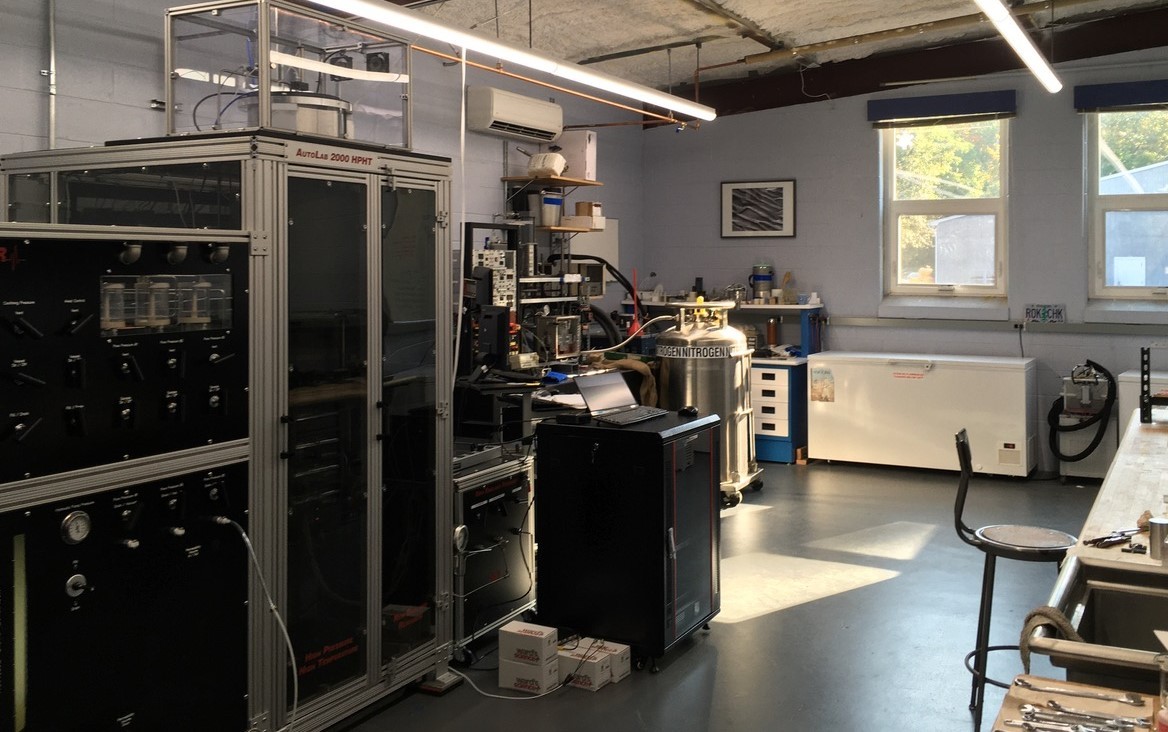Tools of the Trade: Machines that Squeeze and Tickle Rock and Ice
In the Rock & Ice Mechanics Lab, we use various laboratory instruments to study the physical properties of materials that are important to earth and planetary science. We study natural rocks and ice, with facilities for coring, sawing, and grinding of experimental samples. We have an adjacent machine shop, a central facility for more detailed jobs, and a cold room for ice sample preparation and storage. Here are some of the custom machines that we use for our research.
Cryogenic Biaxial Apparatus
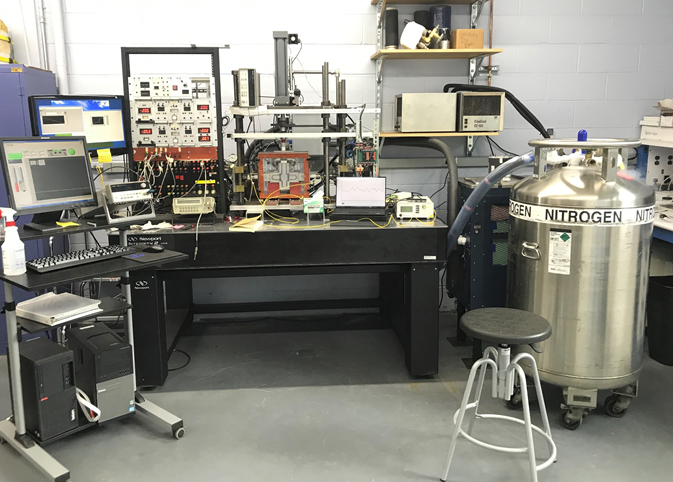
>Custom made biaxial apparatus used to measure frictional properties of ice and ice/melt mixtures at ambient pressure and temperatures between -170˚C and 0˚C
>Has been used to study friction of ice on ice, rock, and till, shear strength of tethers embedded in ice and will soon be used to measure ice attenuation
>Independent servo-controlled horizontal and vertical actuators for precise control of normal and shear stress
LN-Cooled Environmental Chamber

>Can perform long-term experiments (multiple months) at temperatures as low as -180°C
>Large sample chamber (~1 m3)
>Pass through ports enable functional performance testing
Ice Sample Fabrication and Characterization Center
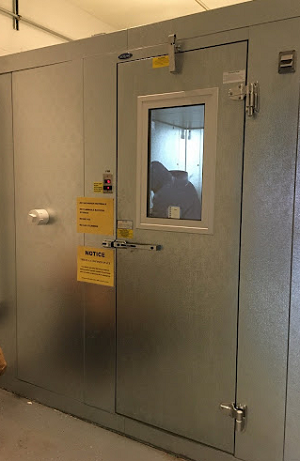
>Used to prepare samples for microstructural analyses
>Contains light microscope, microtome, band saw, and ice sieving equipment
>Maintained at -20˚C
>Cryogenic Polarized Light Microscope
Firn Apparatus
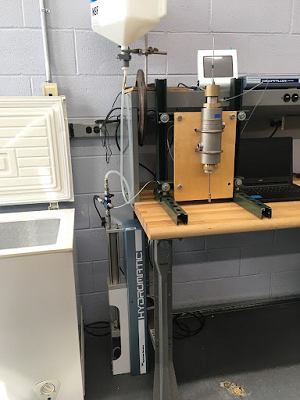
>Uniaxial compaction cell for measuring firn densification
>Temperatures to -40˚C, pressures up to 3.5 MPa, and stresses up to 35 MPa
Learn more: Understanding Firn Rheology Through Laboratory Compaction Experiments and Radar Data
Cryogenic Centrifuge
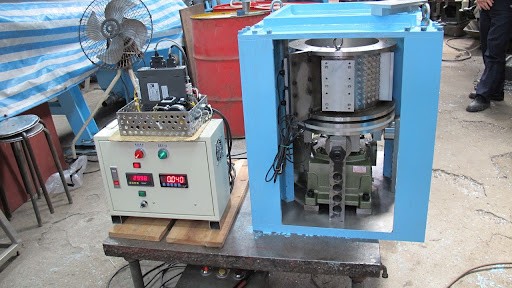
>Apparatus for ice friction at high g
>Custom apparatus designed to ride in the geotechnical centrifuge at Carleton lab to enhance the normal force
>Mechanical motor rotates a bottom rock plate while an ice cylinder is held steady
>Friction is determined from torque measurements
>Peltier cooling system
New England Research (NER) Autolab 2000 - High-Pressure and High-Temperature Triaxial Apparatus
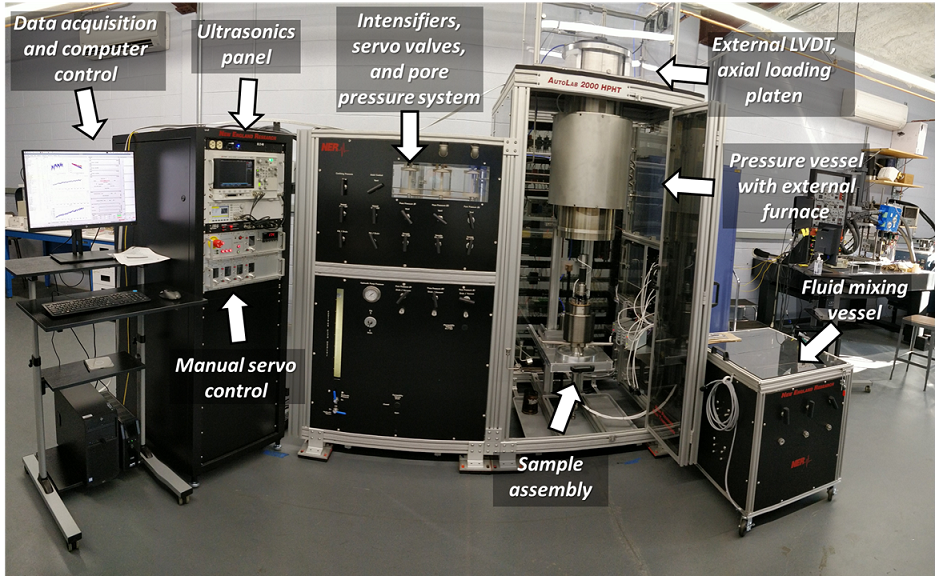
>Thanks to the generous support of Peter Kelemen
>Controlled measurements of rock scores 1.5 inches in diameter at temperatures up to 200 ˚C and pressures up to 200 MPa
>Measurement of stress using internal and external load cells
>Strain using strain gauges, internal LVDTs (axial+radial), and external LVDTs
>Permeability using either flow through or pore pressure oscillation
>Electrical conductivity via special endcaps
>In-situ anisotropic measurements of P and S wave velocities and waveforms
>Separate pressure vessel for mixing CO2 with water prior to pore pressure injections
Triaxial Deformation Apparatus
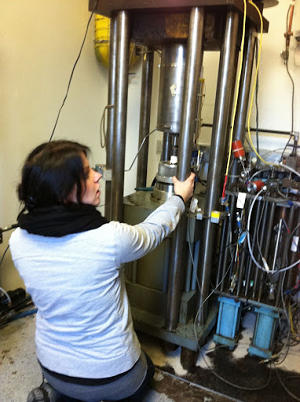
>Custom made apparatus for measuring stress, strain, and permeability, and elastic properties of rock cores (1.375 in. diameter)
>Pressures up to 700 MPa and 200˚C, pore pressures of 300 MPa, and axial stresses up to 1.5 GPa
JEOL JCM-7000 Benchtop Scanning Electron Microscope

>Backscattered and Secondary electron detectors for imaging samples
>Energy Dispersive X-Ray Spectroscopy detector for chemical analysis and mapping
>Automated stage mapping and mosaic stitching over areas up to 11 cm2
>Low vacuum setting for nonconductive and outgassing samples
>JEOL gold coater for imaging nonconductive samples at high vacuum conditions
Applied Seismology Consulting 16 Channel Acoustic Emission System
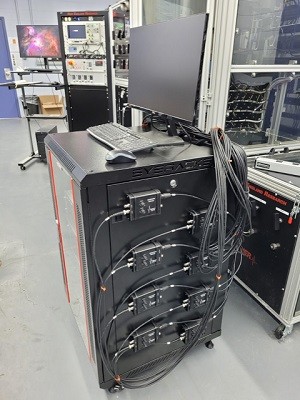
>Used to locate acoustic emission events during experiments
>May perform P-wave velocity surveys to acquire 4D P-wave velocity structure of samples
>Interfaces with either the Cryogenic Biaxial Apparatus or NER Triaxial Apparatus
Cryogenic Q Apparatus
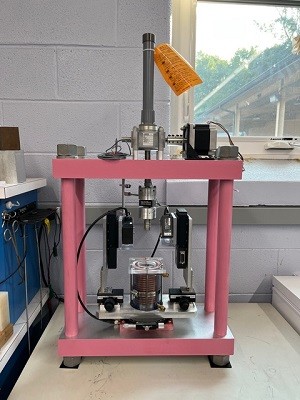
>Based on design of Takei et al.
>High Precision apparatus uses piezoelectric actuators to apply small amplitude oscillations
>Laser displacement meters measure strain with high accuracy
>Cryogenic cooling via circulating fluid
>Rotating stage and trio of load cells to ensure centered loading

